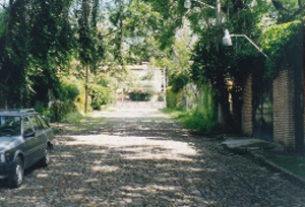A Balloon in Cactus
Not that the commercialization of Christmas has totally taken over Mexico, but it seems that Santa and Rudolph might be slowly gaining over the Holy Family and the Three Kings.
Once upon a time, there were precious few images of Santa Claus in Mexico, and Gene Autry’s rendition of “Rudolph the Red Nosed Raindeer” was not heard blaring over store loudspeakers, drowning out “Ave Maria,” and “The Little Drummer Boy.” Mexican children would leave a shoe under their bed praying for a holiday treat like a small toy or a candy, from the Three Kings on January 6th, Three Kings Day.
Now, it could seem that greed might be casting its shadow over the story of Bethlehem, except for one very important thing: Las Posadas is still observed in Mexico. That cannot be underestimated, nor can it be commercialized.
Legend has it that las posadas came to Mexico via the Spanish missionaries, as a sure-fire, very dramatic way to impress the birth of Christ upon the Mexican people, targeted for conversion. No matter how it arrived, the beloved tradition of las posadas is an experience so profound, so spiritually uplifting, that it’s a privilege to take part in, even to merely observe, the honored ritual.
Las posadas begin on December 16th and continues each night through Christmas eve. On evenings during the posada season, people gather to pray before a nacimiento — a Nativity scene.
They form a candlelight procession, usually led by a priest, with guitar-strumming musicians, and children portraying Mary and Joseph; often “Mary” is riding a burro. The procession continues down a selected street of private casitas before which various Nativity scenes are depicted with living, motionless people, as still as statues, barely breathing, honored to have been chosen.
Christmas carols (villancicos) are sung by all in the procession, and the songs ask for ” posada ” or shelter at the inn. At each doorway, they are turned away, and move on to another house, another door, another rejection. This continues until Christmas eve, when at last “Mary and Joseph” are not turned away, but are welcomed into the inn.
After a rosary is said by all, the Christ child, usually a life-size doll but occasionally a real baby, is placed on a bed of straw in the Inn.
After midnight Mass, there’s a fiesta with music, hot fruit punch, sugar cane, oranges, and candy. Piñatas are expertly smashed by happy children who scramble for the sweets which rain down upon them on this holiest of nights, Noche Buena.
Perhaps the Christmas tree has replaced the traditional nativity scenes in many Mexican homes, and Santa and Rudolph can be found in the stores today, but most Mexicans still hear ” Campana Sobre Campana,” — Bells over Bethlehem. For another year, Mexico will know the true spirit of Christmas.


